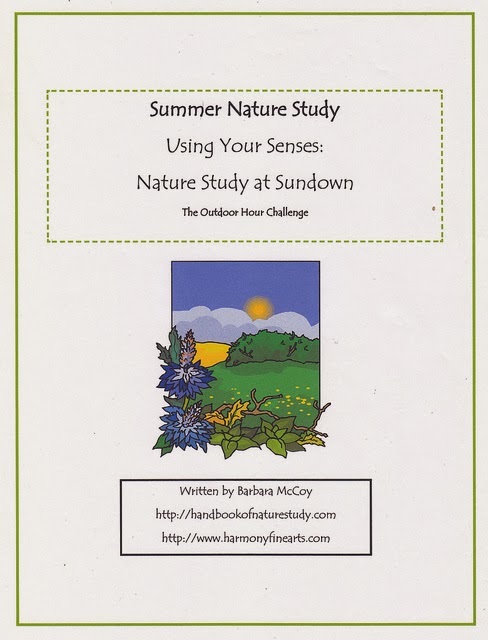This past month saw a return of the Outdoor Hour Challenge to a more topical approach as opposed to a seasonal approach. For our family, it breathed new life into our time outdoors and although we had a focus we were much more open to letting things just happen.
As we gardened, sat outside for our dinners, and traveled to various local locations, the insect topics came to us and we worked on paying close attention to the opportunities. This truly is the kind of nature study that interweaves itself into your everyday life, the kind you can do just about every day.
We were trimming lavender when we noticed this foamy white globs on many of the plants. We knew right away that it was some sort of insect that was creating these globs but we were not sure which insect. When we were back inside, I Googled “white foam on lavender” and right away we could easily see this was a common search. There were many resources that all pointed to the Spittlebug.
After doing some reading online, we found that it is many times found on rosemary plants too so we went out to look. Yes! There it was on our rosemary plants.
- They are related to aphids.
- They feed by extracting plant sap.
- Nymphs cover themselves with a frothy mass that provides protection from predators.
- There can be more than one nymph in a glob.
- Oh, and the “spittle” is not spittle at all and actually comes from the other end of the insect. 🙂
Although they can do minimal damage to plants (according to most sources we read online), we decided to take the advice of most and just wash the globs off with the hose. Easy enough.
We have had a huge increase in the number of flying insects in the front garden. The sage, the butterfly bushes, and the lavender are all still in bloom and each day there are hundreds of flying creatures that come to enjoy the flowery goodness. The fiery skipper above is the most common butterfly we have in our garden at this time of year. Isn’t it amazing to see all the parts up close? Can you see the probiscus?
The bees are thick and it makes me realize how easy it is to provide a healthy bee habitat. Plant bee friendly plants and provide even the smallest amount of water and they find you. We had a visitor the other day ask if we were afraid of bee stings and I honestly answered that even though we are in close contact with the bees, they avoid us more than we avoid them.
The flying insect we do have trouble with is the yellow jacket. We had to put up a trap for them because they were stinging my son…..who somehow seems to attract them. Every evening when we sit outside to eat our dinner, one or two of the pesky little insects come to buzz around us and our plates of food. They are very persistent this year for some reason. I think this is the fourth time we have had to rebait our yellow jacket trap. This style has been very successful for us and it is very economical to use since you just buy little packets to bait the trap after it gets full. (You can buy them on Amazon: Rescue WHYTR-BB8 Wasp Hornet Yellow Jacket Trap Reusable.)
I have been thinking a lot about the relationship between native plants, non-native plants, and insects since reading a book on this topic. Bringing Nature Home is another one of the books I received from Timber Press to review and share with you in a post. This book goes more deeply into how introducing non-native plants into our habitats creates an environment that can make life harder for native insects and plants.
It is far more in-depth than I could grasp on the first time through reading it but it has given me lots to think about. It is a book that makes me wish I was staring over with choosing plants for our whole yard but since I can’t do that, I can look forward and make better choices in the future.
If you are interested in reading and learning about how plants and insects (and other creatures), both native and non-native, thrive or die because of choices we humans make….this is the book for you. I am going to read it through again once I have some time to think and meditate on my responsibility as a garden owner.
We are still experiencing temperatures far above normal and the abundance of sunshine has drawn us out into the garden just about every day this week. We did lots of pruning and composting but we are still delaying our actual autumn garden clean-up until we see a change in the weather. The birds and insects and I suspect a skunk and raccoon are still frequenting our garden and enjoying the food source.
Jami’s Tuesday Garden Party meme is open from Tuesday to Thursday so there is still time for you to jump in and participate!

















